
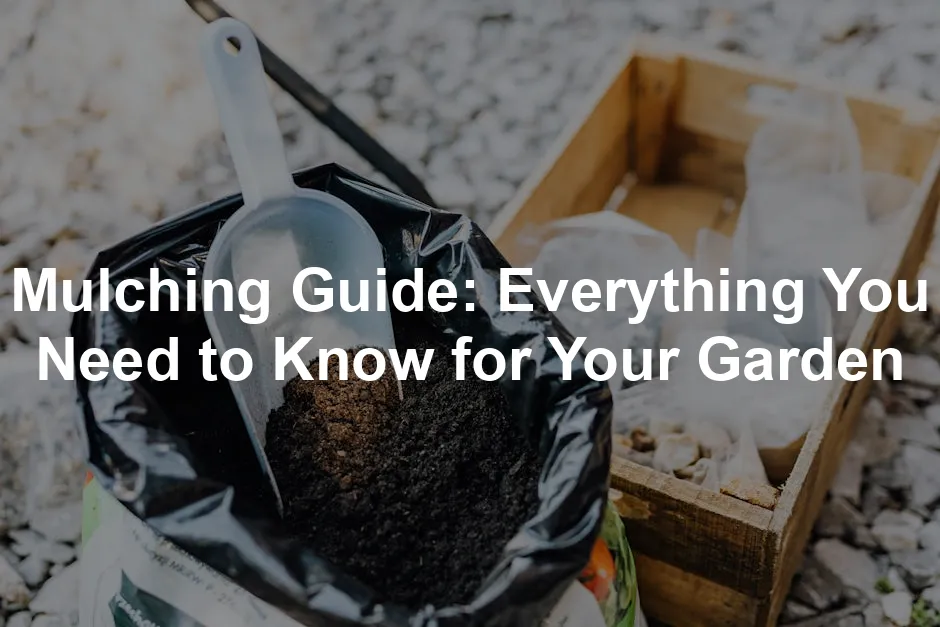
Mulching Guide: Everything You Need to Know for Your Garden
Introduction
Mulching involves covering your soil with materials. This practice is vital for healthy gardening. It offers numerous benefits for plants and reduces maintenance efforts. In this guide, you’ll find all the essential information about mulching techniques, materials, and best practices.
To get started on your mulching journey, consider investing in Organic Straw Mulch. It’s a fantastic way to suppress weeds and retain moisture while being friendly to your plants and the environment.

Summary and Overview
Mulch is any material applied to the soil surface around plants. It plays a crucial role in gardening by enhancing soil health and plant growth. There are two main categories of mulch: organic and inorganic.
Organic mulches, like straw and compost, decompose over time, enriching the soil. Inorganic mulches, such as gravel and landscape fabric, do not break down but provide long-lasting coverage.
Mulching offers several advantages: it suppresses weeds, retains moisture, and regulates soil temperature. However, improper mulching can lead to problems, like over-mulching and pest attraction.
In this guide, we’ll cover the types of mulch, effective application techniques, timing, and common mistakes to avoid. You’ll gain the knowledge to make informed choices for your garden’s needs.
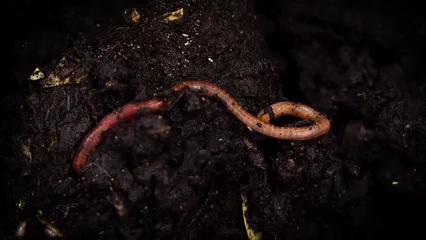
Understanding Mulch
What is Mulch?
Mulch is a material spread over soil in gardens. Its primary purpose is to protect and enhance the soil. Initially, mulch came from natural sources like fallen leaves and straw. Over time, gardening practices evolved, introducing various materials like wood chips and compost.
Using mulch promotes soil health by retaining moisture. Research shows that mulch can reduce soil moisture evaporation by up to 70%. It also improves soil structure, making it more fertile. By covering the ground, mulch prevents weeds and regulates soil temperature, benefiting plant growth. Whether you’re a newbie or a seasoned gardener, understanding mulch is essential for a thriving garden.
Want to learn more about the history of gardening practices? You might consider checking out some great gardening books to deepen your knowledge.

Benefits of Mulching
Why Mulch Your Garden?
Mulching offers several benefits that every gardener should know. First, it effectively controls weeds. A thick layer of mulch blocks sunlight, minimizing weed growth. This means less time spent pulling pesky weeds.
Second, mulch retains moisture. It can improve water retention by as much as 50%. This helps plants stay hydrated during dry spells. Additionally, mulch moderates soil temperature. It keeps roots warm in winter and cool in summer.
Moreover, organic mulches enhance soil health. As they break down, they add nutrients back into the soil, boosting fertility. Lastly, a fresh layer of mulch enhances your garden’s appearance, adding a tidy, polished look.
Excited to discover which type of mulch suits your garden best? Make sure you have the right tools at hand, like a Garden Rake to help you spread it evenly.

Types of Mulch
Organic Mulches
Organic mulches are fantastic for enhancing soil health. Here are some popular types:
- Shredded Bark: This attractive mulch decomposes slowly. It retains moisture well but can sometimes rob nitrogen from the soil.
- Compost: Rich in nutrients, compost improves soil structure. It breaks down completely within a year, feeding plants as it decays. Learn more in our Guide to composting in small backyard spaces.
- Straw: A budget-friendly option, straw helps with moisture retention. However, it decomposes quickly and may sprout seeds if not weed-free. You can buy quality Organic Wood Chips as an alternative!
- Grass Clippings: Free and available, they provide nitrogen. Use them in thin layers, as fresh clippings can heat up and damage plants.
- Leaf Mold: Made from decomposed leaves, it’s lightweight and nutrient-rich. It takes about 12 months to prepare but enhances soil health significantly.
Each type has benefits and drawbacks. For instance, while compost enriches the soil, it needs regular replenishment. Research shows that organic materials decompose at various rates, with straw breaking down the fastest.

Inorganic Mulches
Inorganic mulches serve a different purpose in gardens. Here’s a look at some popular options:
- Gravel: This long-lasting mulch provides excellent drainage. It can last up to 20 years but doesn’t improve soil quality.
- Rubber Mulch: Made from recycled tires, rubber mulch is durable and helps suppress weeds. However, it may contain harmful chemicals. If you’re looking for a sustainable option, consider Recycled Rubber Mulch.
- Plastic Sheeting: This option warms the soil effectively but can restrict air and water. It lasts for several seasons but isn’t suitable for all plants.
- Landscape Fabric: This breathable material controls weeds while allowing moisture through. It’s effective but can be challenging to remove later.
Inorganic mulches can enhance garden aesthetics but do not break down to enrich the soil. They can last for many years, making them low-maintenance but requiring careful selection.
Want to know how to choose the right mulch for your landscape? A Soil Moisture Meter can help you gauge the best moisture levels for your plants!
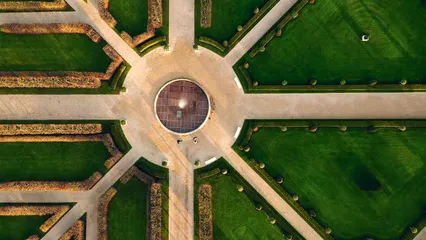
When to Use Mulch
Timing Your Mulching
Timing your mulch application can significantly affect your garden’s health. The best times to mulch are in spring and fall. In spring, mulch helps regulate soil temperature as it warms up. This promotes early plant growth. Fall mulching, on the other hand, protects plants during winter. It insulates roots against freezing temperatures.
Consider your local climate when deciding when to mulch. In warmer regions, mulching can start earlier in spring. However, in colder areas, wait until the soil is workable. Additionally, the type of plants you’re working with matters. Tender plants may need protection from late frosts.
Research shows that mulching can lower soil temperature fluctuations by up to 10 degrees. This stabilizes conditions for your plants. For a detailed schedule, check out our seasonal gardening calendar.
Don’t forget to have a Garden Hose with Adjustable Nozzle ready to keep your plants well-watered after mulching!
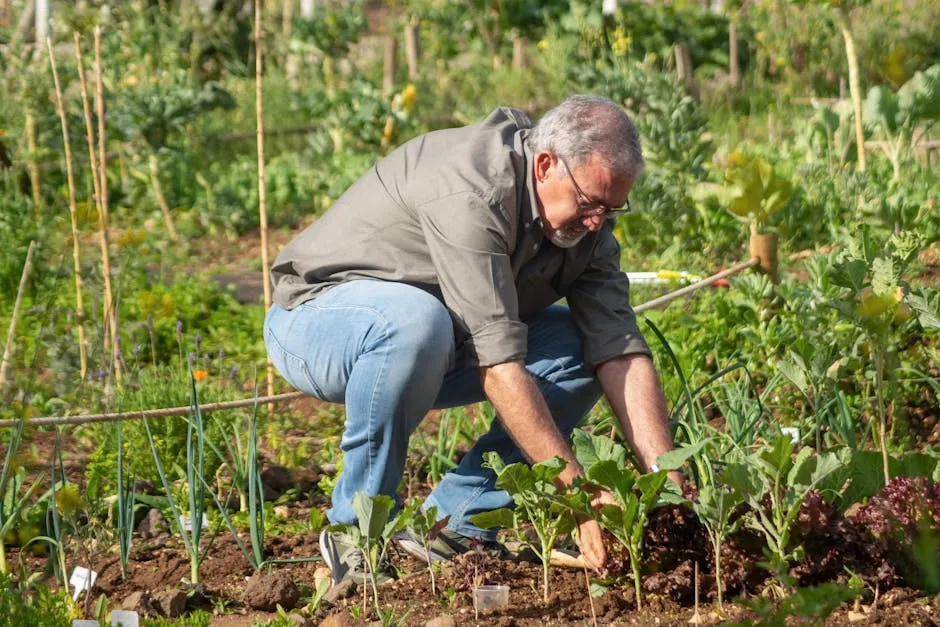
How to Apply Mulch
Step-by-Step Mulching Process
Applying mulch effectively ensures your garden thrives. Here’s a step-by-step guide:
- Prepare the Area: Start by removing weeds and debris. This ensures your mulch has a clean base to settle on. Use a hoe or hand tools for precision.
- Water the Soil: If the soil is dry, water it thoroughly. Moist soil helps mulch adhere and keeps plants hydrated.
- Choose the Right Depth: Aim for a mulch thickness of 2-4 inches. For smaller plants, 2-3 inches is ideal. Larger plants and trees can benefit from 3-4 inches. This thickness suppresses weeds and retains moisture without suffocating roots.
- Spread Evenly: Use a Wheelbarrow to transport mulch and a rake to spread it evenly. Avoid piling mulch against plant stems to prevent rot.
- Maintenance Tips: Check mulch levels regularly. Replenish as needed, especially in organic mulches that decompose over time. Typically, you should replace organic mulch every 1-2 years.
- Common Mistakes to Avoid: Don’t create “mulch volcanoes” by mounding mulch against tree trunks. This can lead to rot and disease. Also, avoid using fresh grass clippings in thick layers, as they can heat up and damage plants.
For easy reference, download our mulching checklist to guide you through the process. And remember, having a Garden Kneeler and Seat can make your work much more comfortable!

Troubleshooting Common Mulching Problems
Mulching can be beneficial, but it isn’t without challenges. Let’s explore some common mulching problems and their solutions.
One frequent issue is over-mulching. Applying too much mulch can suffocate plant roots, leading to poor growth. A layer of 2-4 inches is typically sufficient. To prevent this, always measure the thickness before application.
Another concern is pest attraction. Certain mulches can lure unwanted critters. A study found that wood mulches can attract pests like slugs and snails. To combat this, consider using organic mulches that provide habitat for beneficial insects while avoiding overly moist conditions that pests love.
Choosing the wrong type of mulch is also common. For instance, using fresh grass clippings can lead to heat buildup, harming plants. Instead, opt for aged clippings or other organic materials. If you’re dealing with pests, an Organic Pest Control Spray can be a lifesaver!
By being mindful of these potential issues and implementing preventive measures, you can enjoy the full benefits of mulching.
Want to dive deeper into pest management in gardens? You might find it helpful to keep a Garden Journal to track your experiences and observations!
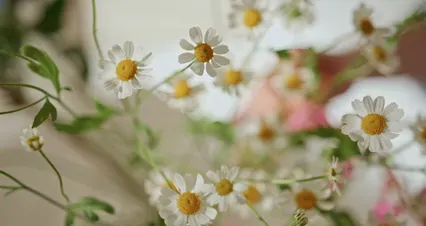
Conclusion
In summary, mulching is essential for maintaining a healthy garden. It provides numerous benefits, including weed suppression, moisture retention, and improved soil health. Experiment with different types of mulch to find what works best for you.
Join our gardening community for ongoing tips and support. Share your experiences and learn from fellow gardeners! And if you’re looking to enhance your garden with some lovely features, consider adding a Solar Powered Garden Light to brighten up your nights!
Please let us know what you think about our content by leaving a comment down below!
Thank you for reading till here 🙂
All images from Pexels



